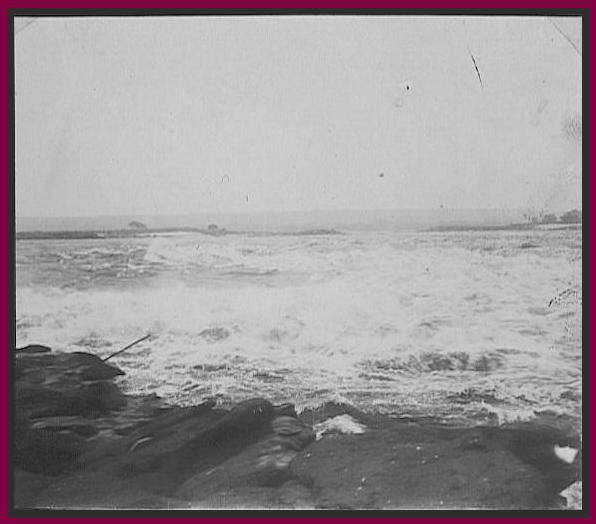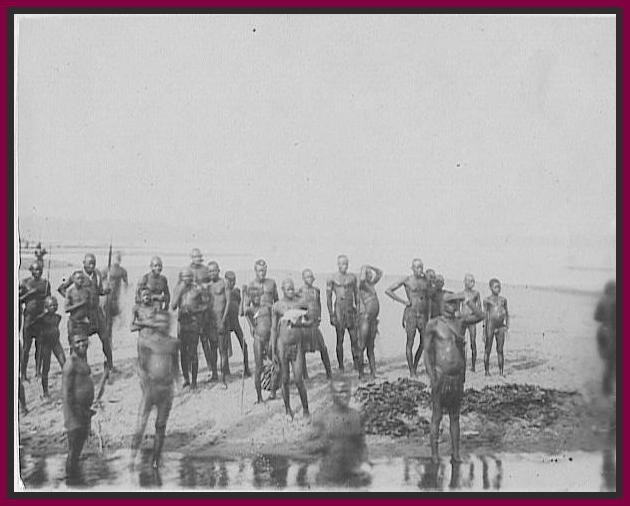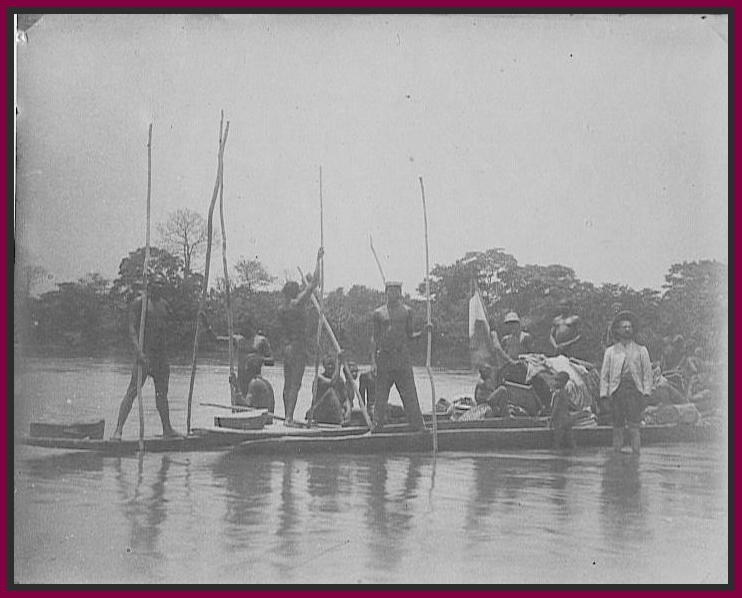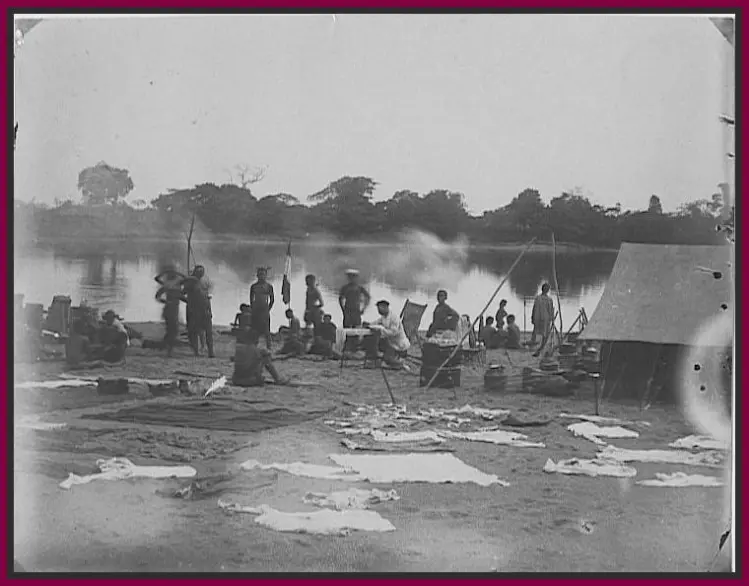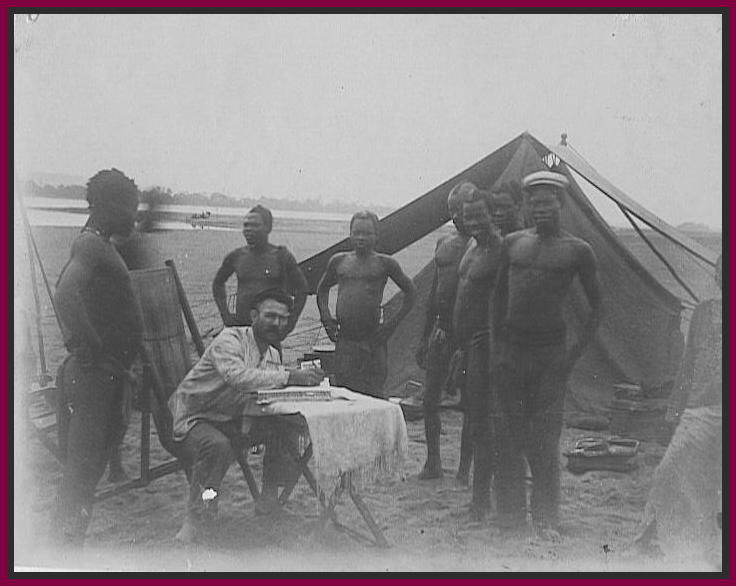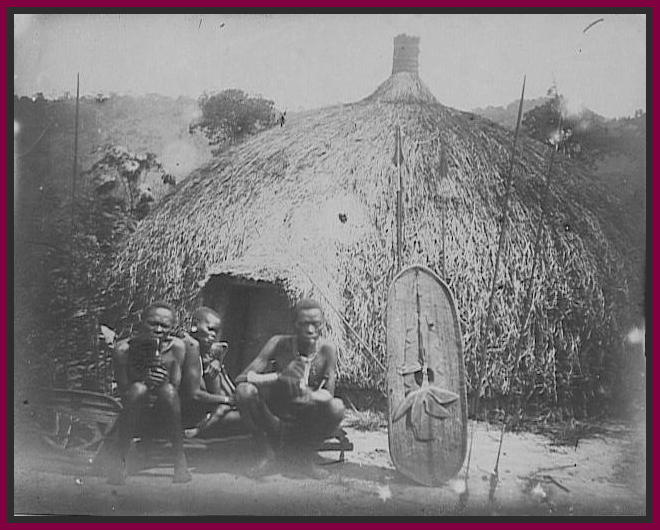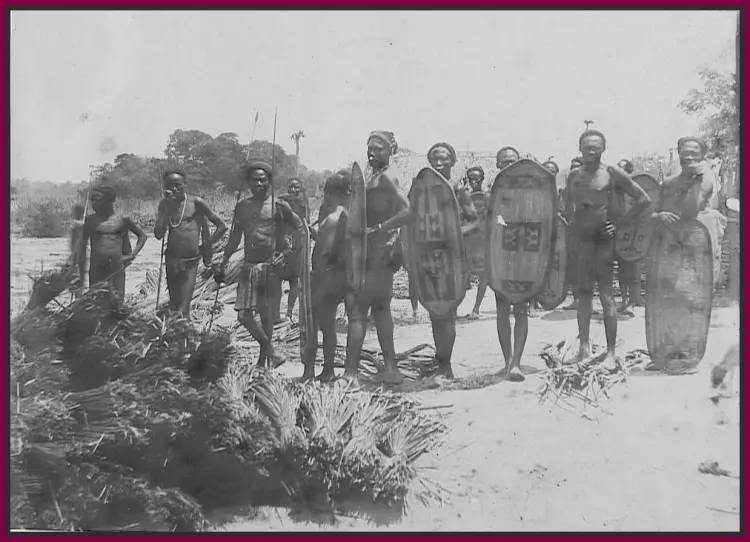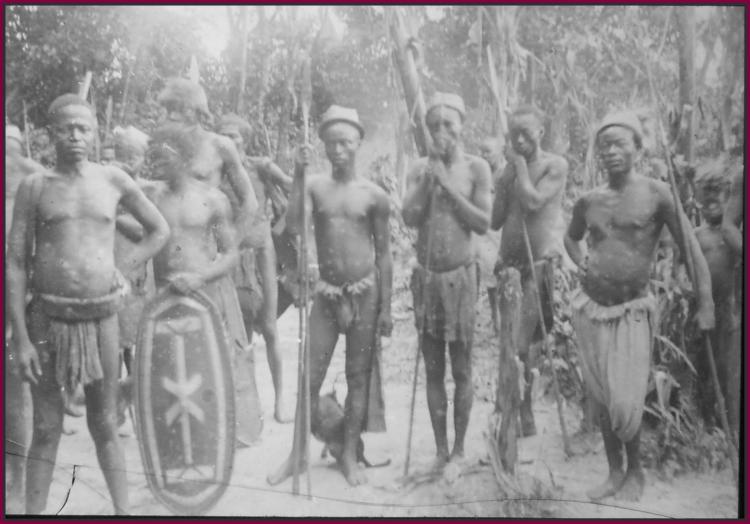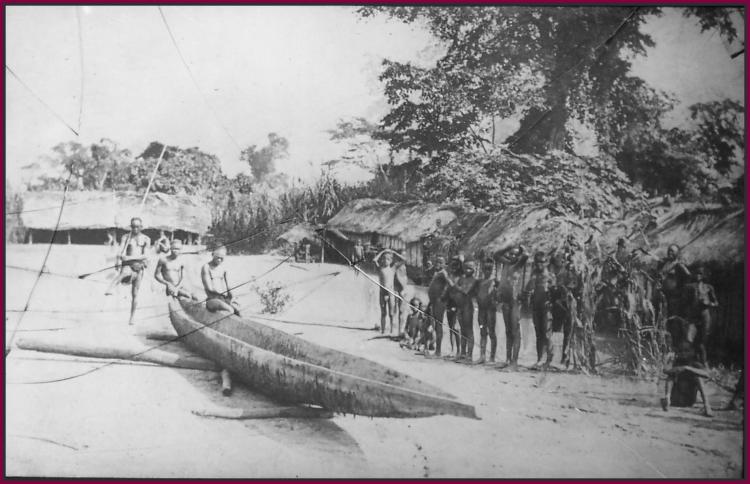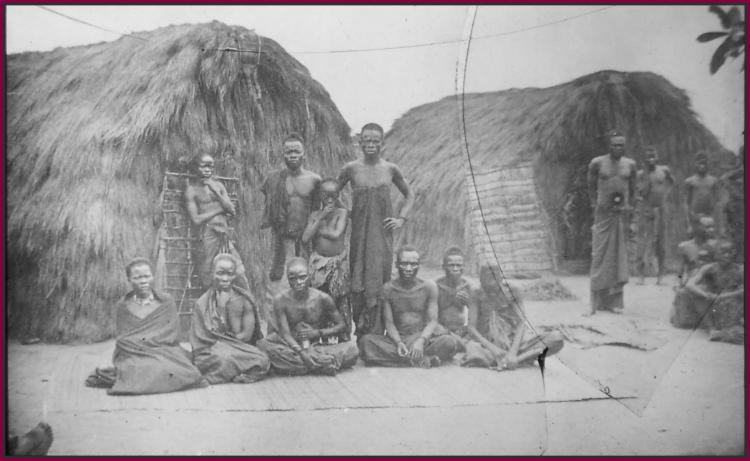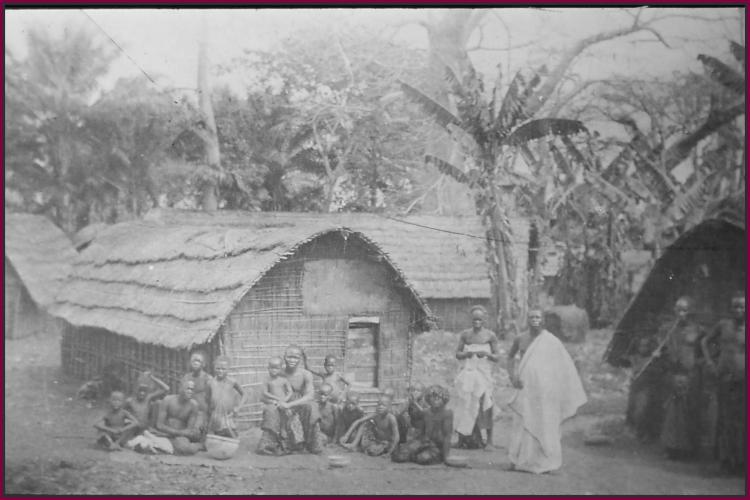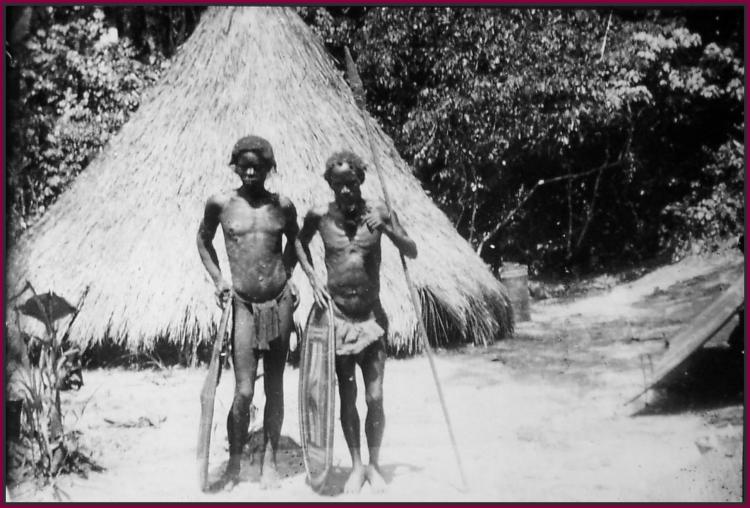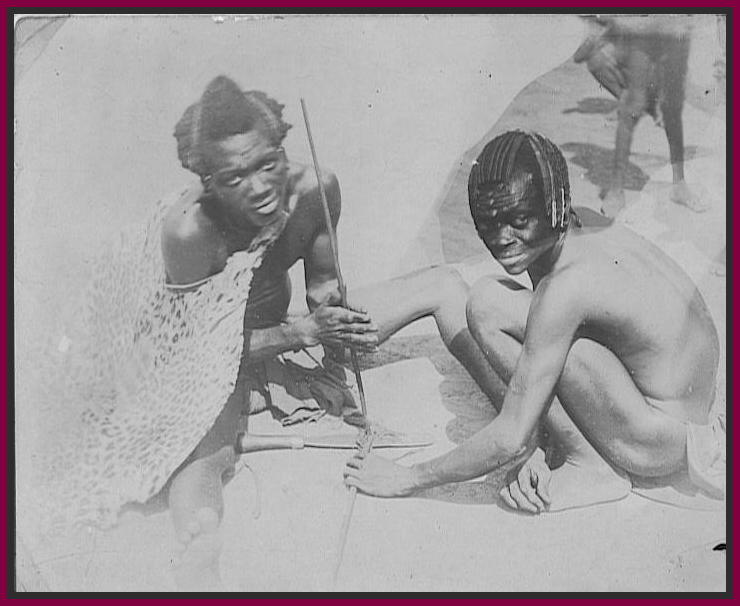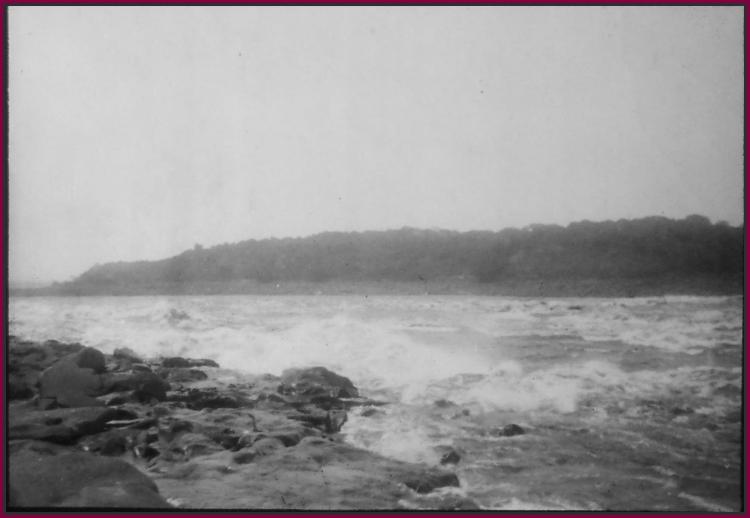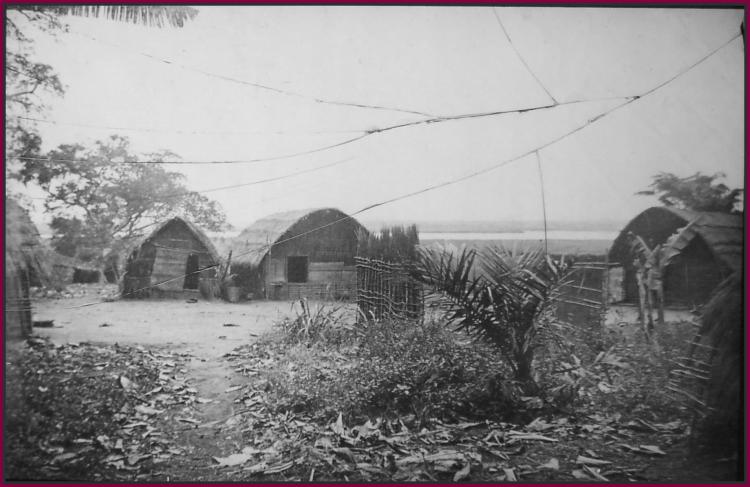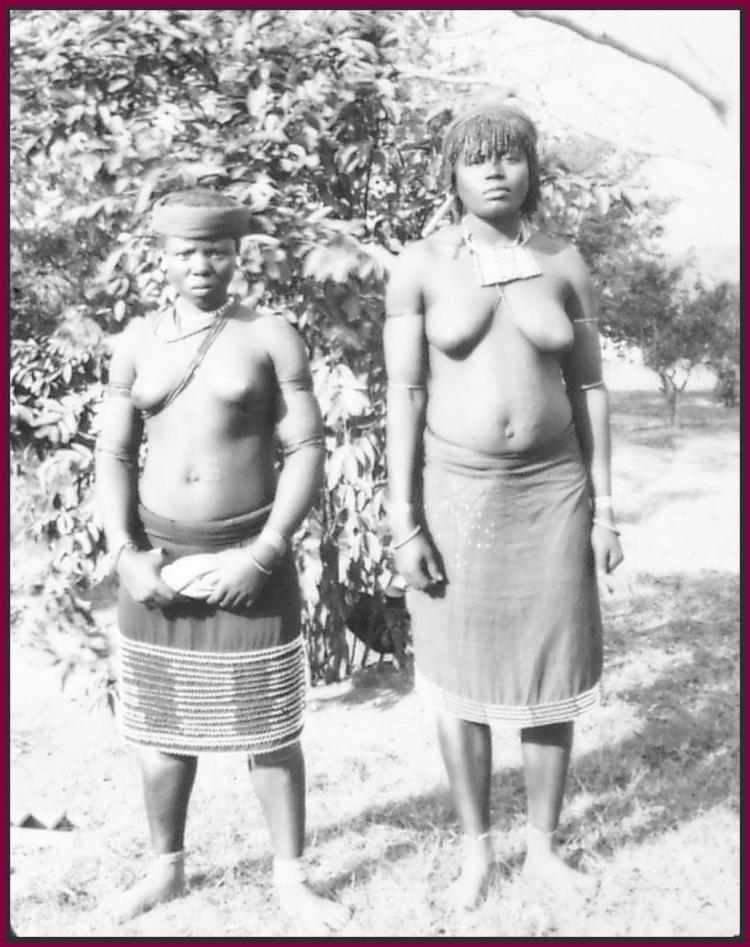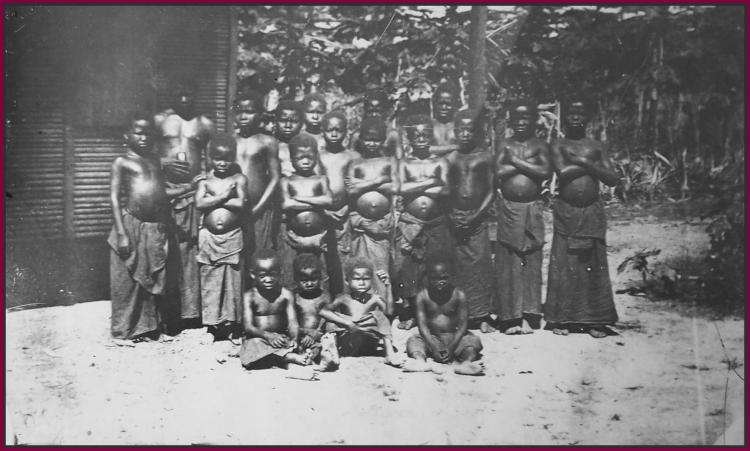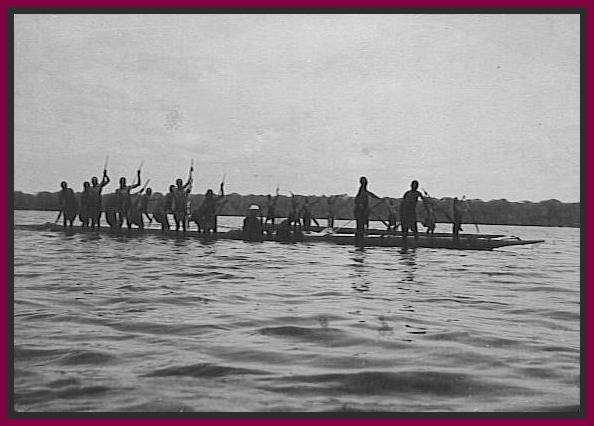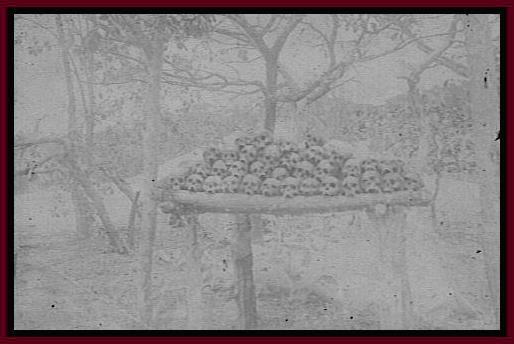Website Established: May 22, 2020
January 20, 2024
The William Stamps Cherry Trilogy is a success! Please be sure to place your orders through LULU.com. Scroll down for more information!
NOTE: Mike Fay’s science blog notes with links that appeared here earlier in their entirety for both of his trips retracing Cherry’s steps in Central Africa have been taken down by National Geographic Society since the change in ownership of its magazine once again, which stopped the magazine’s progress being made at that time on its reporting of this extremely important world historical information. Regardless, all of those reports have been saved by both Mike Fay and myself for future reference if needed. Therefore, I have left all of the dead links to those reports from the field in place on this website should NGS decide to reconnect them. The William Stamps Cherry story, however, remains the same.
This is a one-page website.
Please scroll down…
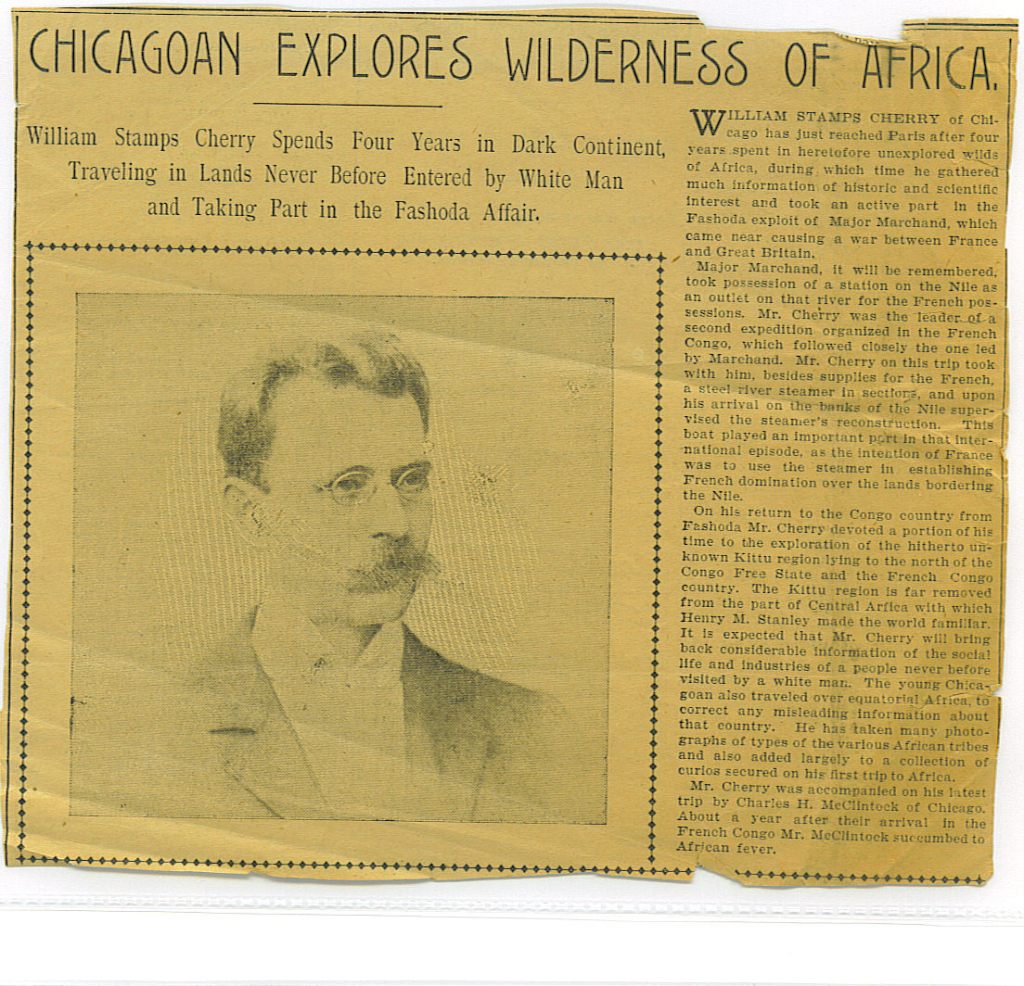
ACKNOWLEDGEMENT: Dr. Cherry, the grandson of William Stamps Cherry, and I wish to acknowledge the incredible contribution of Dr. J. Michael Fay (Mike Fay) to this project. Mike made two National Geographic sponsored trips into the Central African Republic tracing the explorer’s steps there in 2014-2015 and again in 2017 during volatile times. His reports from the field including photos were posted on this website earlier. Mike is an American ecologist and conservationist with the Wildlife Conservation Society, and was a National Geographic Society Explorer in Residence for many years. His contributions to wildlife conservation are well known throughout the world, and Dr. Cherry and I were amazed at his extent of knowledge regarding Africa and the rapid extinction rate of the elephants there. The two photos here are of Mike Fay and NGS wildlife photographer Nathan Williamson when they visited Dr. Cherry’s home at Lake Tahoe, Nevada in 2016.
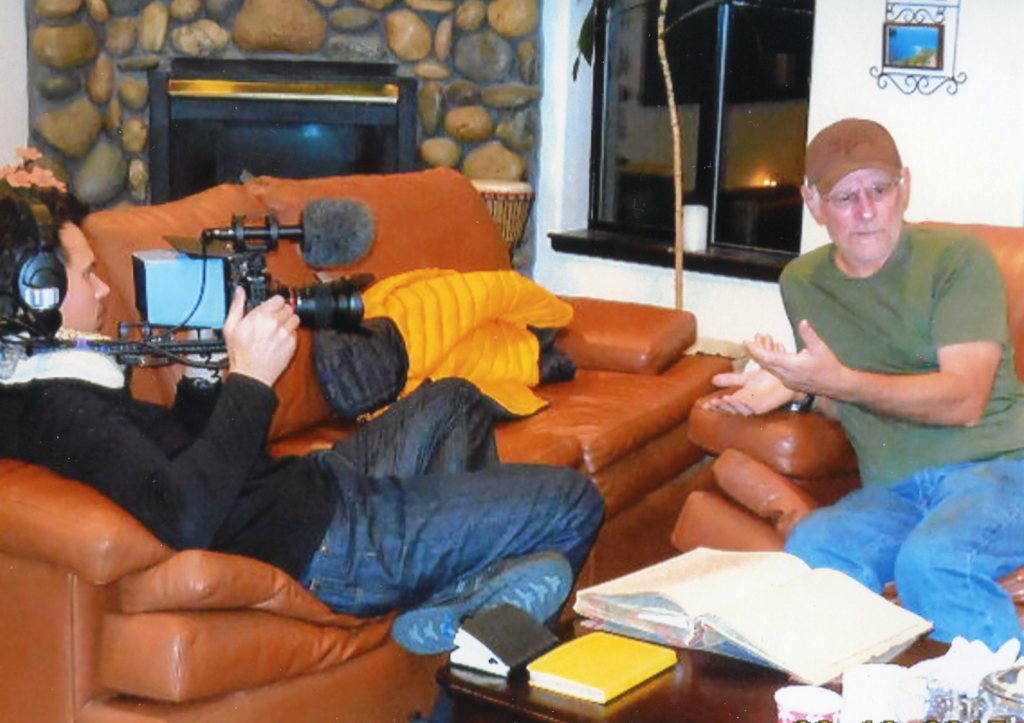
CRITICALLY ENDANGERED! 2023 And still more than ever CRITICALLY ENDANGERED today in 2024.
African forest elephants are the elusive cousin of the African savanna elephant. They inhabit the dense rainforests of west and central Africa. Their preference for dense forest habitat prohibits traditional counting methods such as visual identification. Their population is usually estimated through “dung counts”—an analysis on the ground of the density and distribution of the feces.
African forest elephants are smaller than African savanna elephants, the other African elephant species. Their ears are more oval-shaped and their tusks are straighter and point downward (the tusks of savanna elephants curve outwards). There are also differences in the size and shape of the skull and skeleton. Forest elephants also have a much slower reproductive rate than savanna elephants, so they cannot bounce back from population declines as quickly at the same rate. Their last strongholds are located in Gabon and the Republic of Congo, with smaller populations remaining in other African countries (Cameroon, Central African Republic, Equatorial Guinea) and Côte d’Ivoire, Liberia, and Ghana in west Africa.
African forest elephants live in family groups of up to 20 individuals and forage on leaves, grasses, seeds, fruit, and tree bark. Since the diet of forest elephants is dominated by fruit, they play a crucial role in dispersing many tree species, particularly the seeds of large trees which tend to have high carbon content. They are therefore referred to as the ‘mega-gardener of the forest’. To supplement their diet with minerals, they gather at mineral-rich waterholes and mineral licks found throughout the forest.
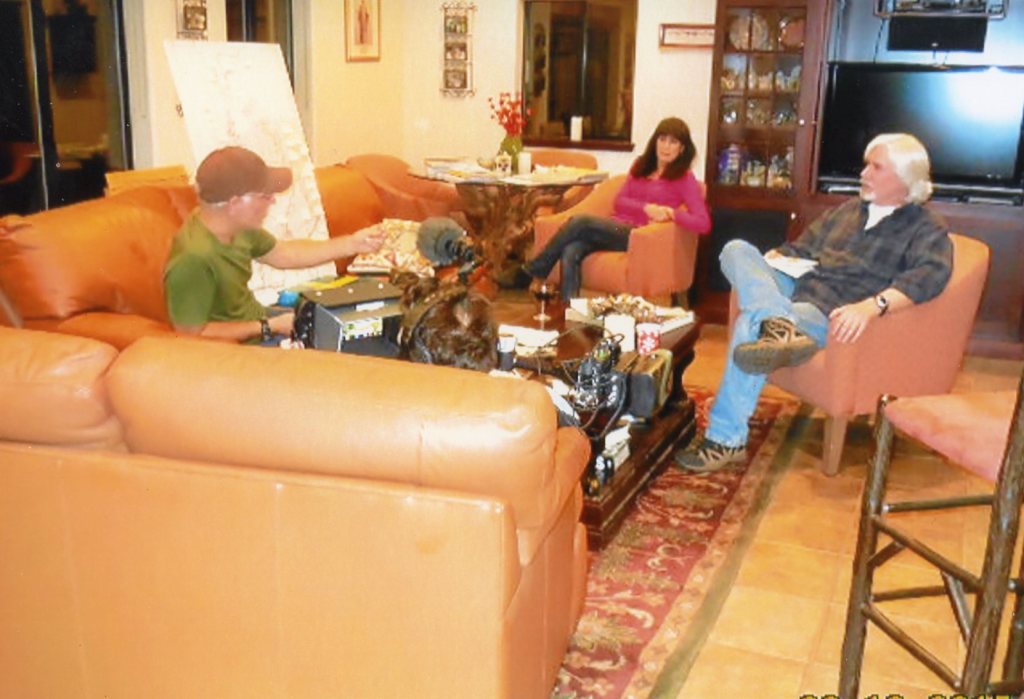
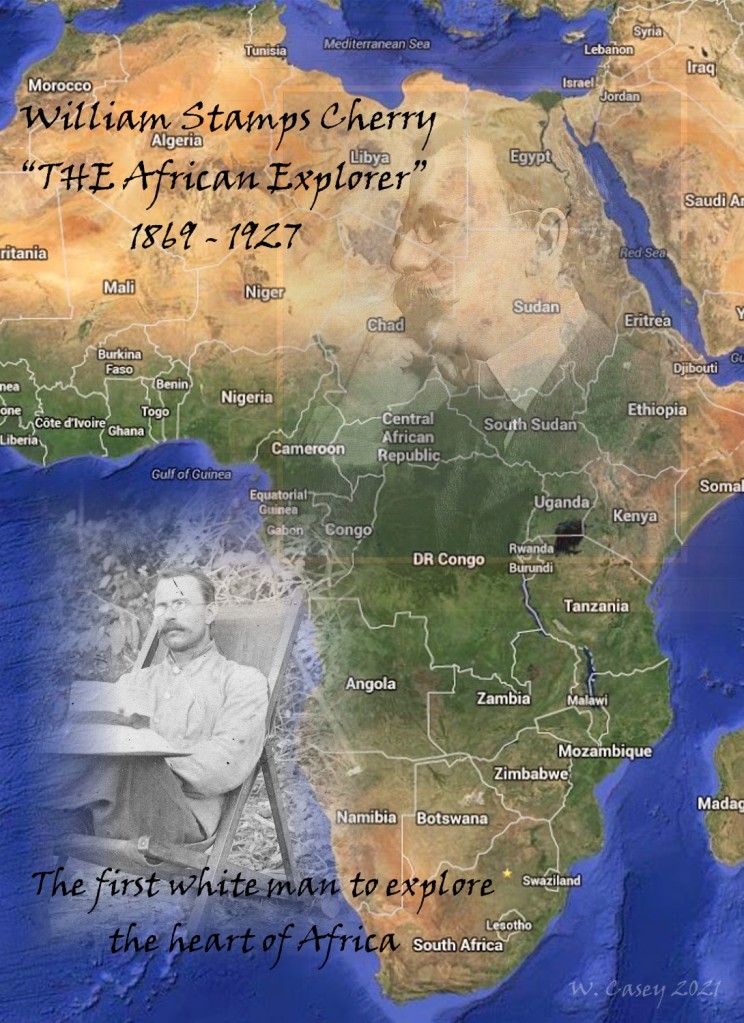
Synopsis
William Stamps Cherry was born on Valentine’s Day, February 14, 1869 at the Missouri-Iowa-Illinois tri-state convergence on the Mississippi River where he spent his childhood years. He moved to South Dakota at age 11 and spent his adolescent and teen years there, and where he canoed alone down the Missouri River more than 500 miles living off of the land and the water, hunting and fishing, at age 17.
He made his first trip to Africa in 1889 at age 20 and returned in 1892 with the largest collection of African and Arab artifacts the world had ever seen, and it was all on display at the “White City” Chicago World’s Fair in 1893, which made him a young celebrity in the public’s eye by age 24. To this day his collection remains the largest and most diverse collection of antique artifacts of their kind from there currently archived in vaults at the Natural History Museum of Los Angeles County.
He made his second and highly celebrated and recognized trip to Africa in 1896 and returned in 1900. It was during this second trip to Africa at age 27 when he became the chief engineer of the entire French marine fleet in Africa. After that one-year experience, he then went solo into the heart of the continent, into what today is called the Central African Republic. It is there, at the heart of the heart of the African continent where he surpassed all expectations, where he discovered new African tribes and rivers and wildlife.
He was the one who turned on the light in what was then called The Dark Continent; the young American known throughout the entire African heart region as Demba Creecy, the Great White Chief. He was the white “friend” that none of the natives there ever wanted to see leave, and for good reasons. He was William Stamps Cherry, the only white man ever welcomed into their villages with open arms, most times, but not all. He was the first explorer to live with the Central African natives.
The natives sang, “Demba Creecy amaleo. Dembe Creecy enjonnyo. Dembe Creecy amai. Demby Creecy amaleo.” (as written with Demba spelling variations) Free translation: Demba Creecy, our friend. Demba Creecy is good, very good and strong. Demba Creecy, our friend, is more and more our friend.
When he returned home at age 31, he was internationally celebrated as a world-class explorer second only to Henry M. Stanley in his accomplishments and discoveries.
“Extending across the river, which averages about a mile in width, with here and there huge piles of boulders that check the tremendous onflow of water that comes roaring and dashing into spray, The Falls present an imposing appearance. The thing that strikes you most impressively is the volume and force of the water, and giving your thoughts a practical turn you exclaim: What a wonderful supply of electrical power is here waiting to be utilized by the Africa of the future. It will outrival that of Niagra!”
William Stamps Cherry – 1889
“As the Equator is approached, the population grows denser, the Lower Congo district having been depopulated by the slave-raiding of former years. It is sad to notice the great number of ruined villages that are passed, at one time the abode of a happy, contented people. On an evil day, the Arab slave-raiders swooped down upon them, surprising them by a midnight attack. Torches flashed. The crack of rifle was heard. The men were cut down. The women and children were caught, bound and carried into slavery, and the village was left a heap of smoking ruins.”
William Stamps Cherry – 1889
January 10, 2021 The complete William Stamps Cherry story is now a published trilogy. 540 pages and 177,000 words all total. Numerous original photographs. Each book presents a part of the much larger Cherry story. All three together present the full story.
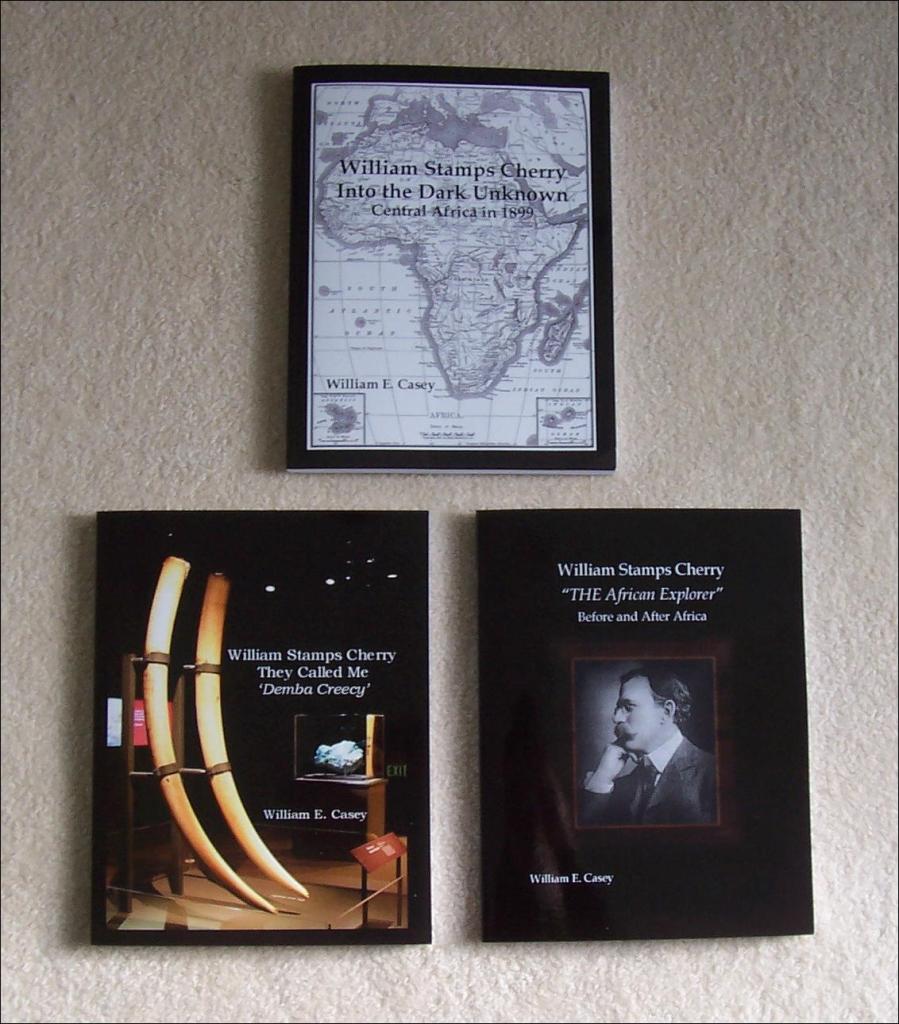
ABOUT THE AUTHOR: William E. (Bill) Casey is the official biographer for William Stamps Cherry and has served in this capacity for the grandchildren of William Stamps Cherry since 2004. He earned his master’s degree in journalism from the University of Nevada Reno in 1998, and he was a founding member of the original Incline Village & Crystal Bay Historical Society at Lake Tahoe. He is the author of a three-volume history of Sierra Nevada University, The Architects of SNC – 1969-2009, where he had earned his bachelor of science degree in environmental science in 1988. He lived at Lake Tahoe for 32 years before relocating to the Pacific Northwest in 2016. He currently lives in Sequim, Washington.
The Trilogy – Click on the links for descriptions
William Stamps Cherry – Into the Dark Unknown, Central Africa in 1899 is the straight forward explorer’s report; his observations, what he witnessed and what he discovered in his own words. This is the first book in the trilogy.
William Stamps Cherry – They Called Me ‘Demba Creecy’ is the hunter’s report. It is the second book in the trilogy. Cherry’s foremost reputation was that of the highly celebrated American explorer who was the first white man to go to the heart of the then called Dark Continent and turn on the light. His second reputation was that of a successful big game hunter. This book addresses that reputation. Because the events happened during the same time Cherry was exploring, this book serves as the backstory to the first book.
William Stamps Cherry – “THE African Explorer” Before and After Africa is the third book in the trilogy. It is the journalist’s report. It answers the questions: Who was Cherry? Where did he come from? What happened to him after he returned home from his second journey in Africa? And, how come nobody has ever heard of him?
He was the first white man to explore the heart of Africa
“The intelligence of the average African is as a rule much underrated. His power of insight into character is remarkable. He is a perfect adept at mind-reading. He is sometimes looked upon as stupid by the man whose character he is weighing and whose secret motives he is analyzing with the greatest nicety. But, you are required to get deep into his confidence before he will tell you what he thinks about other people.”
William Stamps Cherry
Into the Dark Unknown – Central Africa in 1899
Who is William Stamps Cherry and why is he important in world history?
Click on the YouTube video for a National Geographic video introduction, and please read the written introduction to the video by National Geographic Senior Editor Peter Gwin. Thank you.
PUBLISHED MAY 25, 2017 by Peter Gwin
Before a brutal civil war plunged the Central African Republic into chaos, the country generated few headlines. Today the former French colony—one of the world’s least developed nations—holds much of the continent’s remaining wilderness. But in 1889, when William Stamps Cherry, then a 20-year-old from Missouri, arrived on African shores, almost the entire region north of the Congo was a blank spot on the map.
Cherry, inspired by the exploits of Henry Morton Stanley and other 19th-century adventurers, planned to strike out on his own as a hunter-explorer. Over two trips during the next eight years, he canoed along the Oubangi River and up several of its tributaries, exploring much of the deep jungle and broad savannah that today is the Central African Republic.
Over the course of his travels, Cherry spent long periods living with different tribes, hunting elephants, drawing maps, and documenting the animals he encountered. When he returned to the United States, he brought back a collection of artifacts, including clothing, jewelry, and weapons from the tribes he spent time with as well as one of the largest pairs of elephant tusks ever imported to the United States. Today, much of the collection is held at the Museum of Natural History in Los Angeles.
Earlier this year, National Geographic Explorer-in-Residence J. Michael Fay completed a three-year project to retrace much of the territory that Cherry explored. Where Cherry recorded massive elephant herds that stretched to the horizon, Fay has found a region decimated by poachers. As Cherry’s biographer, William E. Casey, points out, “Though William Stamps Cherry has been largely forgotten by modern society, his keen observations offer a look back to what Africa was like before the white man arrived.”
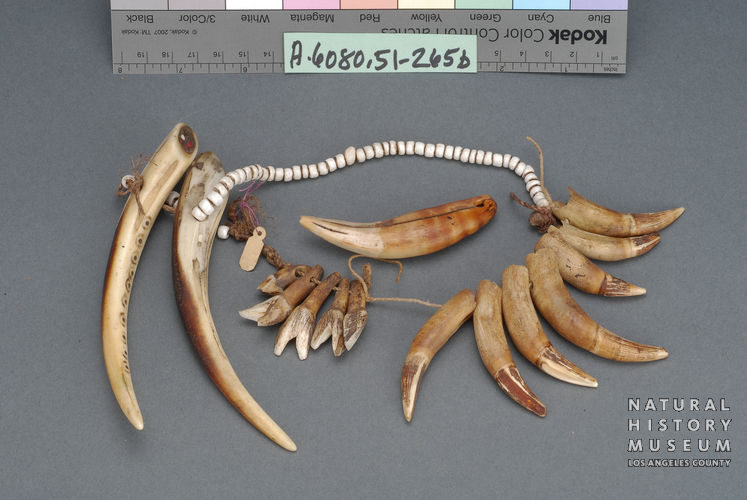
The Trilogy – The Three Reports – In His Own Words – The Full Story

“This Congo bottom has as rich a soil as any in the world. When properly cared for, everything grows luxuriantly and gives speedy returns for the labor expended. When once the agricultural interests of the Congo are put upon a scientific basis and the people learn to take advantage of the natural resources at their command, this will be a grand country, supporting a teeming and prosperous population.”
William Stamps Cherry – 1889
Selected images from 1898 and 1899
Use the left and right arrows to view the others…
“The inland country between the M’Bally and the Kotto is mostly a level, fertile plain, broken by creeks flowing down well-wooded valleys. The water was the clearest I have seen in any country; it looked as if it had been distilled. The beds of the streams consisted generally of white sand.”
William Stamps Cherry – 1899
“The William Stamps Cherry collection of ethnographic artifacts from Central Africa comprises a unique documentation of cultural traditions from the late nineteenth century.”
John M. Harris – Chief Curator Head, Vertebrate Studies Division, Natural History Museum of Los Angeles County
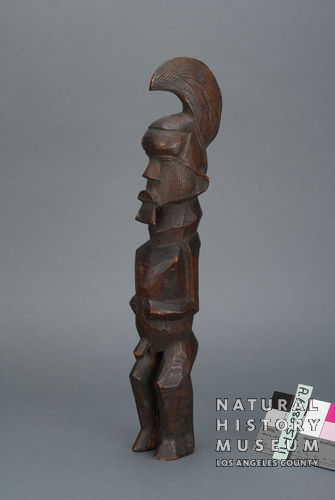
“What makes the collection special is the presence of a manuscript, map, artifacts and photographs as well as a broad spectrum of material culture the collection represents. Taken as a whole it is a rather unique collection for its time.”
Chris D. Coleman – Collections Manager, Anthropology Department, Natural History Museum of Los Angeles County
Central African Republic is down there…
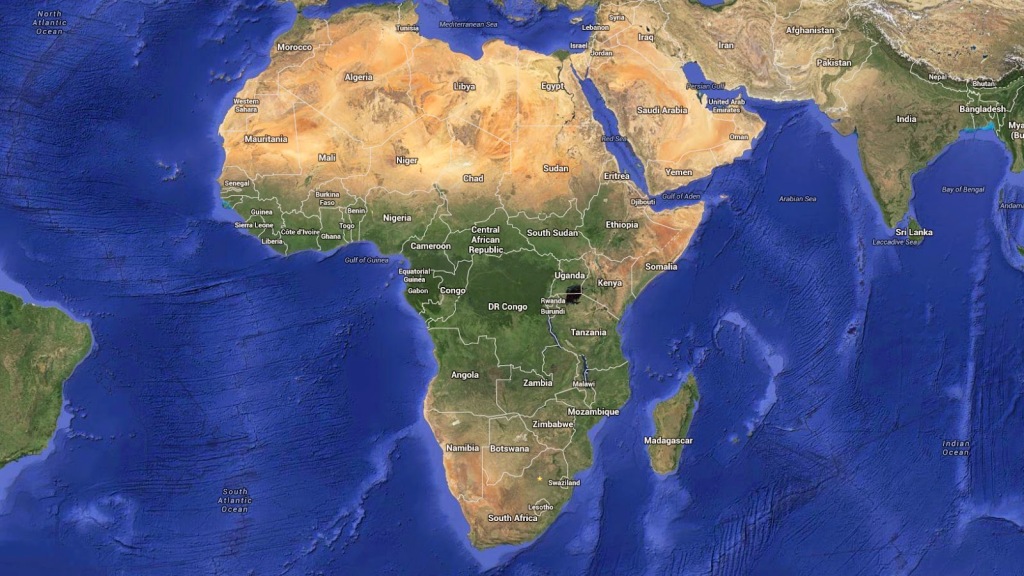
“In the first place, he is an explorer, and an explorer who takes rank second only to Stanley. This can be easily substantiated. No traveler in Central Africa since Stanley has gone over more new ground or has made more important additions to the world’s stock of information regarding the Dark Continent. Mr. Cherry’s touch upon African life was much closer than that of any preceding explorer. No other explorer ever lived among the people and studied them at such close range as he did. The mass of first-hand information of a practical kind which he has to give is simply astounding.”
– 1901, Rev. James Mann Campbell
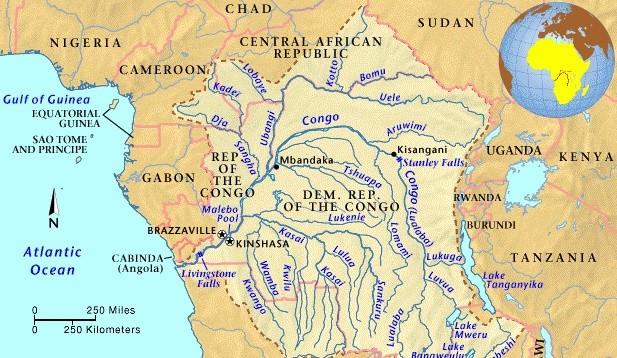
“Mr. Cherry was successful in his unusual enterprise for exactly the same reason that has always brought success to the pioneer. He took the native of the country as his model in the matter of methods of living. He learned and observed the simple rules of health which long experience had taught the natives, and he studied their languages that he might better get along with them. The same methods, exactly, were employed by the fur traders, hunters and early settlers among our own American Indians.”
– 1901, Ray Stannard Baker
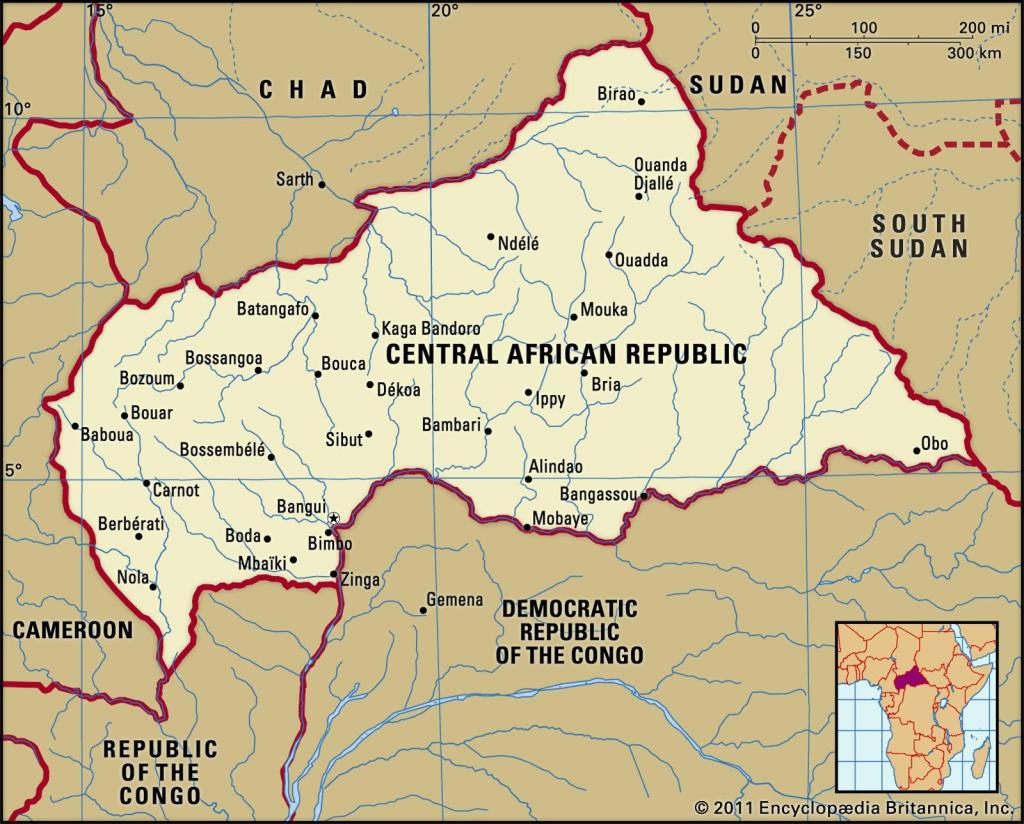
“On the Upper Kotto are three tribes I discovered. They are the Breeas, Lindas, and the Ngozzias. I met the Breeas when I touched the river. They are an interesting study. They possess to a high degree the child nature of the primitive African. Their voices are low and musical. They seldom get angry and do not cherish resentment. They are hunters and agriculturists, and have immense plantations covering thousands of acres. These plantations are not separated by fences, only a stake now and then shows the limits of certain properties. They are polygamists, having from one to five wives, five being a very common number. The Macoonzy, or chief, had seventy. They are impulsive, easily swayed by emotion, and could be kept laughing all the time by having American jokes translated into African vernacular. Their curiosity knows no bounds. The women gossip about their neighbors and they quarrel about their children. A young African maiden is just as particular about the style of her ornaments as any belle of fashion in civilization and finds fault with her rival for not wearing her abbreviated apparel in a becoming way, or for not having her Ngula (red paint) the proper tint.”
William Stamps Cherry – 1900
Mike Fay
National Geographic explorer and renown Wildlife Conservation Society conservationist Mike Fay retraced Cherry’s steps in 2014-2015 and in 2017 in the Central African Republic.
“William Stamps Cherry was the first white man to explore the heart of Africa.”
J. Michael Fay – Dec 25, 2014
To better understand the complexity of the chaos and its impact on elephants and other wildlife, click on the link below to view a video from Mar 9, 2007 with Mike explaining what has happened to all of the animals that were there and why they no longer are. Other videos with Mike Fay appear below.
“What a region this was for the hunter! Game so abundant, that it was no sport to stalk it – a country where animals knew not their mortal enemy. The elephants were just as unfamiliar with man as the antelope. They squealed and called and played with one another all day and all night. There were herds upon herds of elephants here where they were undisturbed. The paths on both sides of the river were worn down six or eight inches. They had traveled in these same paths for centuries. Every few hundred yards, there was a crossing or a drinking or a bathing place. The elephants, unaccustomed to being disturbed, came out in the open in the daytime to eat his cocoanuts and bathed and lived as though there were no such being as man. I had seen and heard them many times as I went up river.”
“I took one man with me and left the rest at the N’Gee. I went up the Kotto River, arriving the first day to almost where the Arabs cross to go to the Wadai. I never was in such a country for game. Antelope, buffaloes, and elephants were around all the time. I don’t think we were ever out of sight of the hippopotamus. I would see the antelope several times an hour. There were seven species of them.”
William Stamps Cherry – Jan 28, 1900
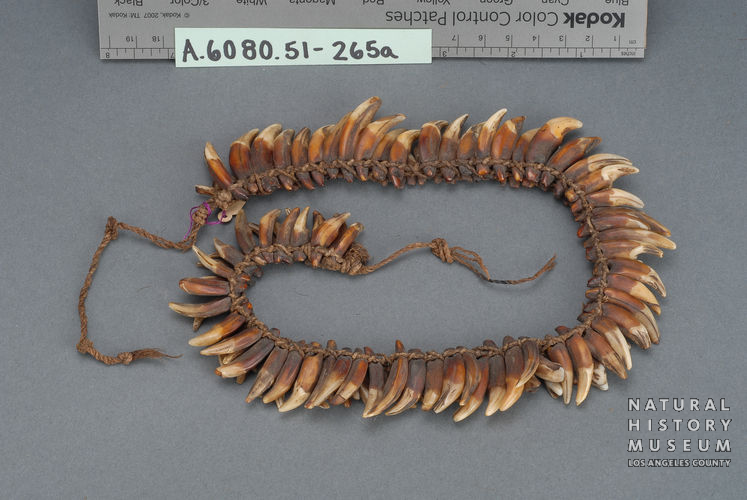
On November 15, 2012, Mike Fay gave testimony for a hearing of the U.S. Senate and U.S. House of Representatives representing the International Conservation Caucus on “The Global Poaching Crisis.”
In his testimony, Mike mentioned William Stamps Cherry. To the best of my knowledge, Mike’s testimony included the first official mention of William Stamps Cherry in nearly 100 years.
“We all worry about elephants, not only because of their intelligence and place as a keystone species in African landscapes, but because they have become extremely valuable. I am an elephant lover, having spent the last 35 years around these gentle giants, and I have personally watched thousands of them get slaughtered in that time. There is a real risk that if substantial action is not taken elephants will go biologically extinct in Central Africa very soon. The killing of elephants in this area to enrich invaders, causing human suffering and disorder is not new. An American explorer, William Stamps Cherry, who has remained unknown to the general public over the past century, wrote about his travels into northern Central African Republic in 1896 where he was the first white man to be seen by local people. This was a time of great turmoil and Arab slave raiding in this part of Africa. This trend has continued for almost a century until there are virtually no elephants remaining, but the turmoil only increases.” – J. Michael Fay, Senior Conservationist Wildlife Conservation Society & Explorer In Residence National Geographic Society
“Although elephants are more numerous between the Equator and ten or twelve degrees north latitude clear to the western coast than the buffalo of America, they will All be killed in a short time after the commencement of colonization or emigration to this country. It is a profitable hunt. And with horses to hunt on the elephant is doomed. And horses are to be had in any quantity in the Bagermi and Wadai, and the natives in the east, Arabs, are bringing them here for sale now.”
“With ivory worth about five thousand dollars a ton, the temptation to slaughter the elephants in a reckless way is great.”
William Stamps Cherry – Sep 17, 1898
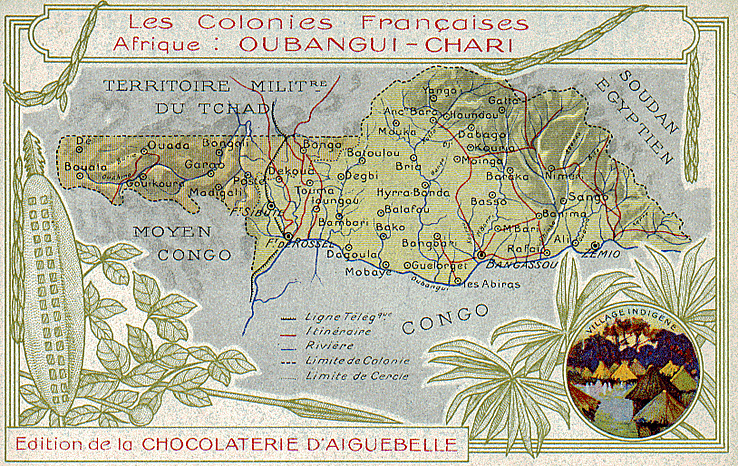
Peter Gwin and Marcus Bleasdale
Peter Gwin is a senior editor at National Geographic. Marcus Bleasdale is an international photojournalist with Human Rights Watch. They present in the following video the crisis that has been happening in the Central African Republic. This report provides the context for what is happening with the country’s current cultural wars. The writings of William Stamps Cherry provide the historical context for what is happening now, 120 years later.
The additional link provided here will take you to Peter’s print interview in Men’s Journal regarding his National Geographic story on CAR.
“The backbone of the slave trade in the Congo has been broken, but it dies hard. It is estimated that before the interference of the European powers, eighty thousand natives were taken from the Congo country annually and sold into slavery. The most of these were deported to Egypt, Arabia, Persia, and Turkey; and so very cheap was human life, that four hundred thousand more were killed in the raids or died on the way to the coast. Think of it, over a thousand human beings killed or taken into captivity every day! But although the area of the slave trade has been restricted, the Arabs still carry on their nefarious business.”
“On my way back from the Kotto, I met a caravan of Arabs. They had a number of native women whom they bought at the rate of one tusk for two young girls of marriageable age. What a vast storehouse of wealth these Arabs have found in the Upper Mobangi region!”
“Except in remote districts bordering on the desert, Arab slave-raiding is a thing of the past, but the Arab slave-trading flourishes in the French Congo. After a war between two tribes, the Arabs are soon upon the scene bartering for the captives. I have seen hundreds of slaves taken from Bangassou, Rafai and Semio fastened together with shackles, bent so as to form an ingenious puzzle. It was impossible for the captives to take them off. The slaves were chained two by two, so that the outer feet were free. Very few of them were men. The Arabs prefer women and children, the former when good looking, supplying the harems of the Wadai.”
“On the Upper Mobangi, slaves are cheap. When slaves are plentiful, a good article can be bought for two hundred gun caps and can in turn be traded off for ivory. Nothing is cheaper in the northwestern Congo than human flesh.“
William Stamps Cherry – 1900
Marcus Bleasdale
Marcus Bleasdale is an international photojournalist from Norway who covered the crisis in the Central African Republic with Peter Gwin. Click on the link below to view his video.
“In the village of Moinga, a Veadear chief who had made friends with the Arabs, I was surprised to run into an Arab settlement of about a thousand souls. Some of these Arabs were passable looking, but most of them were a scaly lot, and some of them were among the most villainous-looking specimens of Arab humanity I had ever seen. Had I known of this cobra’s den, I would have given it a wide berth. I was anything but comfortable, knowing that my throat might be cut at any moment, if they only had the courage to do it. I found a few hundred native women and children in their camp. They had been selected with good taste; the boys and girls were bright and intelligent looking, and the women young and well formed. They did not treat them badly, any more than a man treats an animal badly that he wishes to keep in good condition to sell at a large price. They wore no shackles, but had heavy anklets that impeded their locomotion and kept them from running away.”
William Stamps Cherry – December 1899, M’Bari River headwaters
“The evening of this day, I discovered the river Bungu, a fine, big river flowing into the Kotto from the northwest, and after going up it a short distance, we found the village of Maddaboggia. This village is situated at the mouth of the river. Maddaboggia had been raided by Smoucy, and had been driven from his home up this river by Smoucy, the scourge of Western Africa. When I saw him, he was living in temporary quarters, with many of his people sleeping under trees with their baskets and household goods, ready for a hasty march, if Smoucy should come back. Most all of his people had been killed or captured as slaves. There was only a remnant hidden away here in the bush, and many were the sad tales told me. The African exoduses present a pathetic picture: mothers with their babies, old people who cannot walk without difficulty, and panic-stricken people who do not know where to flee. With their plantations destroyed and all their source of sustenance cut off, the people are in a pitiable condition.”
“The chief told me that he had great quantities of ivory before the Arabs came. He said it was plentiful as wood, pointing to the trees. In the raid, they had stolen his favorite wife, and he, himself, went to their camp and told them that he had heard that they wanted ivory and that he had very much, and would give them many tusks to ransom one of the women they had taken. They agreed to ransom her for a great lot of ivory, and Maddaboggia sent them enough for a king’s ransom. They said it was not enough, and he gave them more. Still, this was not enough, and he gave all he had, and when the men that had carried the ivory to the Arabs told them there was not any more, the Arabs never permitted them to return to their village, nor gave up the woman either.”
William Stamps Cherry – Jan 26, 1900
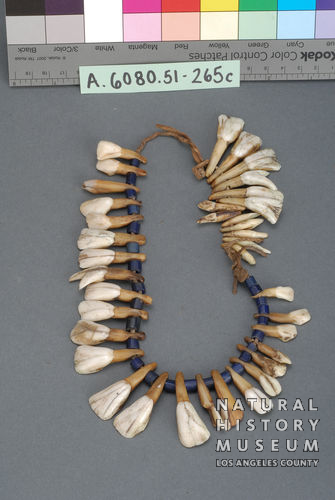
“I am the only person who has ever started out on his own responsibility with very little more than a gun over his shoulder to make his way in Central Africa; and my American ideas have thus far succeeded all right. When the road has not been clear I have always managed to cut a way for myself.”
William Stamps Cherry – 1898
Mike Fay’s 2014 and 2017 expeditions to CAR retracing William Stamps Cherry’s explorations there in 1898-1900.
Mike Fay’s day-to-day posts from his first expedition in 2014 retracing Cherry’s steps in the Central African Republic from his first day to his last, Dec 25, 2014 to Jan 12, 2015 appeared here. Most of those posts were fast reads, and the photos included were often great. The following links, in order, used to provide that experience! But the links were removed by NGS magazine after new ownership.
All links were taken down by NGS in 2023.
2014 – 2015
Dec 26 https://blog.nationalgeographic.org/2014/12/26/expedition-through-the-heart-of-africa-preparation/
Dec 29 https://blog.nationalgeographic.org/2014/12/29/heart-of-africa-expedition-tongo-tongo/
Dec 31 https://blog.nationalgeographic.org/2014/12/31/pushing-north-deeper-into-africas-heart/
Jan 1, 2015 https://blog.nationalgeographic.org/2015/01/01/heart-of-africa-expedition-desolation-in-the-long-grass/
Jan 4 https://blog.nationalgeographic.org/2015/01/04/heart-of-africa-expedition-off-to-the-ndje-river/
Jan 5 https://blog.nationalgeographic.org/2015/01/05/heart-of-africa-expedition-switching-to-a-pirogue/
Jan 6 https://blog.nationalgeographic.org/2015/01/06/heart-of-africa-expedition-downstream-solo/
Jan 7 https://blog.nationalgeographic.org/2015/01/07/heart-of-africa-expedition-pirogue-abandoned/
Jan 10 https://blog.nationalgeographic.org/2015/01/10/heart-of-africa-expedition-into-the-hot-zone/
Jan 12 https://blog.nationalgeographic.org/2015/01/12/no-mans-land-chess-in-the-heart-of-africa/
2017
Mike Fay’s second expedition retracing Cherry’s steps was in 2017. This expedition’s posts from the field included an introduction to William Stamps Cherry by me that appeared at the end. Again, you could follow Mike’s journey into the lands where Cherry studied the people living there at the turn of the century and where he hunted the wildlife for survival, including the elephant, which were very many and beyond numbering at that time, much like the American Buffalo that roamed the prairies in the millions in its time, before the links were cut. During that expedition, Mar 9, 2017 to Apr 9, 2017, Mike walked beyond Cherry’s tracks and deeper into unknown territory much like Cherry had experienced during his time.
Mar 11 https://blog.nationalgeographic.org/2017/03/11/heart-of-africa-expedition-resumes/
Mar 12 https://blog.nationalgeographic.org/2017/03/12/heart-of-africa-expedition-the-sweat-bees-are-thick/
Mar 13 https://blog.nationalgeographic.org/2017/03/13/heart-of-africa-expedition-further-into-the-unknown/
Apr 2 https://blog.nationalgeographic.org/2017/04/02/heart-of-africa-expedition-ends-abruptly/
My posted introduction to Cherry https://blog.nationalgeographic.org/2017/03/17/from-the-heart-of-africa-an-introduction-to-william-stamps-cherry/
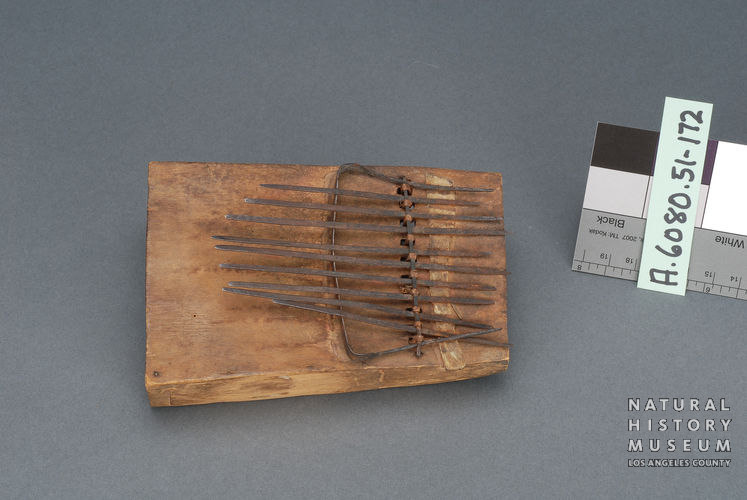
“Here, near the seventh degree north latitude, where I first saw the river, it is three hundred yards wide, with an average depth of five feet during the dry season. In some places, there are many islands and the river widens out to a mile or more. The islands are covered with a tropical vegetation; massive bamboo with tapering leaves like mammoth ferns, dipping their tips in the water; tall palms, the glory of the tropics, with their umbrella-like tops and green foliage; the fragrant river bush that smell like magnolia, filling the air with a heavy, but pleasant, perfume; while the many birds and monkeys complete our idea of an Equatorial forest.”
William Stamps Cherry – 1899, Kotto River
Chinko Wildlife Refuge – African Parks
The Chinko Wildlife Refuge covers a vast area of land between the Chinko and M’Bari Rivers where Cherry explored and mapped. Click on the following link to learn more about the Chinko Wildlife Refuge.
https://www.africanparks.org/the-parks/chinko
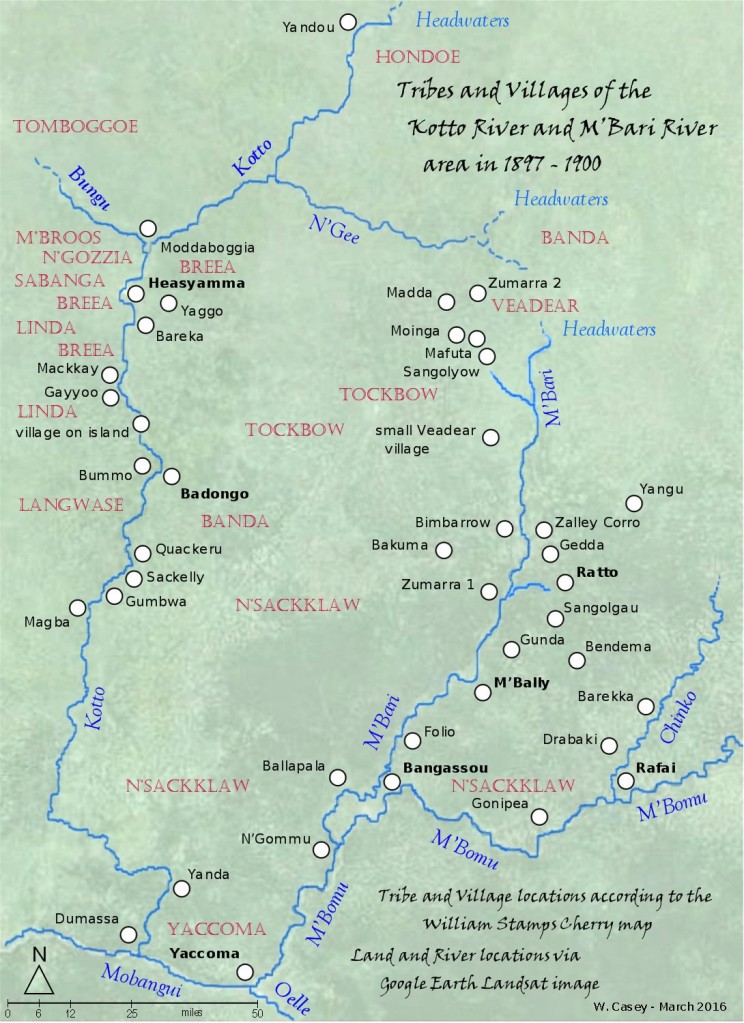
“The day after Christmas, 1899, I arrived at the banks of the Kotto with my little band of thirteen natives. It seems like I was always getting thirteen natives. We were surrounded by savages of an unknown quantity, and as yet we had seen few of them. I had arrived at a critical time. An Arab chief by the name of Smoucy had raided the country on the western banks. There, all was destruction. He had swept it with a besom of destruction. Whole villages were annihilated, and what had been a populous and prosperous country had become a wilderness.”
“Smoucy is the Arab who killed Crampel and secured the guns and cartridges of his ill-fated expedition. He had forced into his service a ferocious tribe called the Tomboggoes, and a combination of this kind left nothing in the way of cruelty to be imagined. On my route, I came across wrecked villages and wasted plantations, with emaciated creatures gliding like ghosts among the ruins, bewailing the loss of children and wives who had been carried into slavery. This Arab demon had no doubt retired meantime from the scene of carnage and ruin and thanking Allah for his glorious victory.”
William Stamps Cherry – Dec 26, 1899
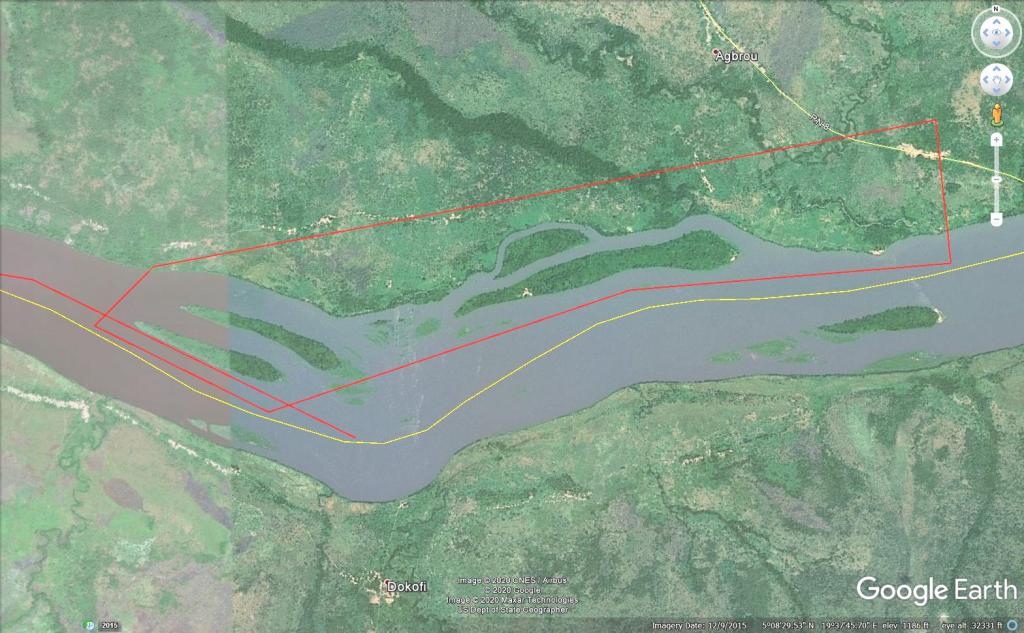
“On this group of islands is some of the richest soil in Africa. In it grows some of the finest timber in the world. There are palm nuts to supply a village of 2,000 people. It will produce any fruit known to tropical Africa, and will also yield an abundance of corn, sorgo and rice. There are also numerous parrots and monkeys. The monkeys cannot leave the islands, but how they got here I do not know. On these islands are opportunities for a naturalist such as few places afford. Had the French Government only given me a free hand, I would have planted orchards of oranges, lemons, pine apples, bananas and all manner of tropical fruits and would have transformed those islands into an ideal park and zoological garden.”
William Stamps Cherry – 1898
“On February 2nd, I got down the river to the mouth of the Bungu. Here, I stopped and took a short trip up this hitherto unknown stream. It flows from the north through what was once a thickly populated country, but Smoucy, the chief of Arab slave-raiders, at whose depredations the Frenchmen wink, has been here, and the country is a desert. There are scattered bands of Tomboggoes who keep their heads on their shoulders by submitting to the taxation of about a hundred percent at the hands of Smoucy. The Bungu is a very rough river and very little of it is navigable, but it flows through a beautiful country.”
William Stamps Cherry – Feb 2, 1900, on his return from the headwaters of the Kotto River
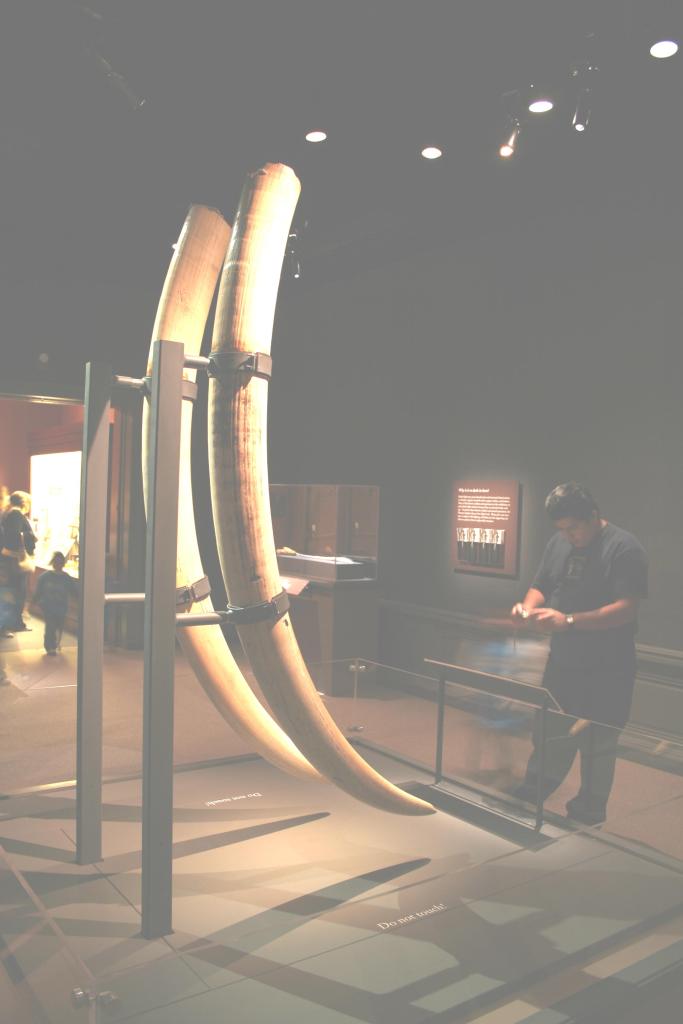
This website has two objectives:
1. Introduce William Stamps Cherry, the renown American explorer in Africa at the turn of the century and show his historical relevance regarding the wildlife and native populations in the Central African Republic today, and
2. Raise awareness of the decimated wildlife in the Central African Republic since his time there and the cultural war that continues. Elephant protection is CRUCIAL at this time.
In the following videos, Mike Fay discusses his MegaTransect, the need for conservation, and the success of his efforts in Gabon.
Also included here is an incredible video interview with Mike, hosted by David Quammen that includes Michael “Nick” Nichols and an excellent video introduction to the video-taped interview.
“The next day, finding the water rough, I left my canoe and went up river on foot, crossing the Arab trail and going until noon. At last, I got up the river as far as I could go, without dragging my canoe overland again. I had passed the mouth of the N’Gee the day before, the river I had heard of and whose mouth I had come up country to see and to place on the map as another discovery of my own.”
“After camping at this rapid, the next morning I started out on the banks to follow the Kotto as far as I could on foot. I went until I came to where the river begins to show traces of habitation by the Hondoes and then turned back, as I had left my one boy with the canoe. I was all alone, and in this lonely country, one experiences a sense of dread, akin to superstition. One listens to the slightest sound. There is nothing so depressing and solemn as to feel one’s self alone in the heart of a vast unexplored country, surrounded by hundreds of miles of territory without human habitation, none but the wild beasts, among which are the lion, leopard, and the inhuman hyena. I decided not to stay away for a second night, and after a lonesome and hasty lunch, I returned to where I had camped the night before.”
William Stamps Cherry – Jan 30, 1900
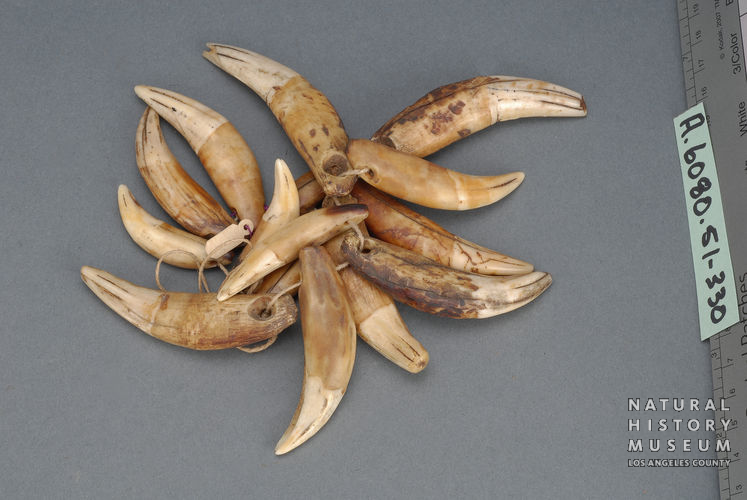
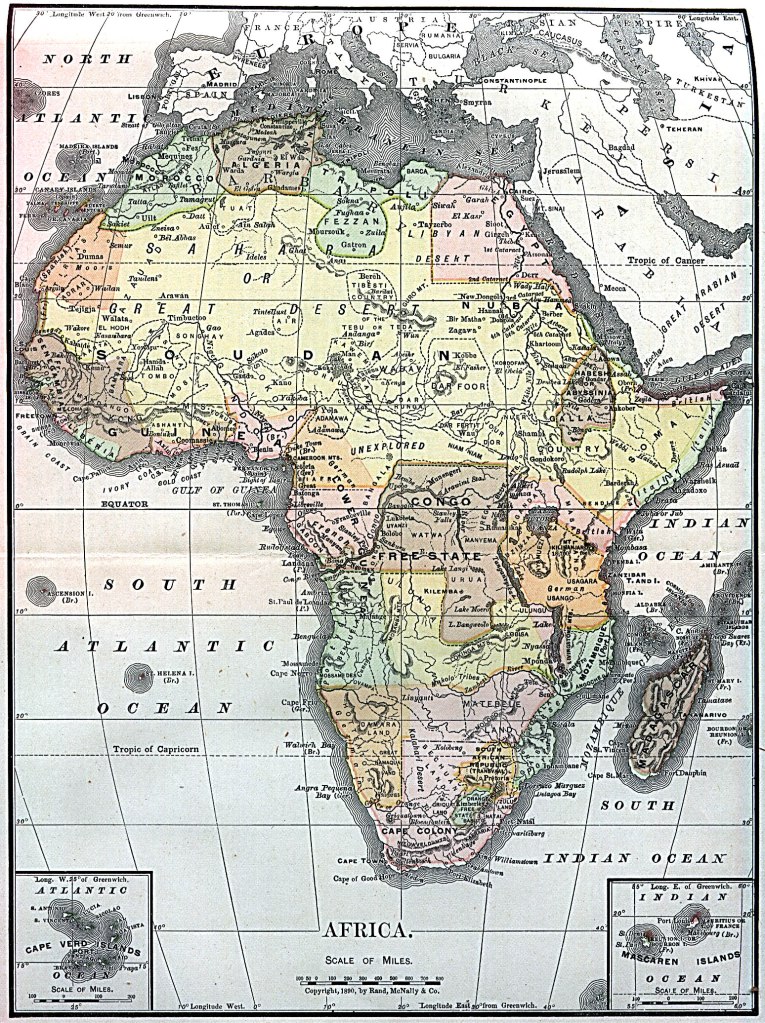
Elephant Populations in Africa
“Prior to European colonization, scientists believe that Africa may have held as many as 20 million elephants; by 1979 only 1.3 million remained — and the census reveals that things have gotten far worse.”
CNN Wire – Aug 31, 2016
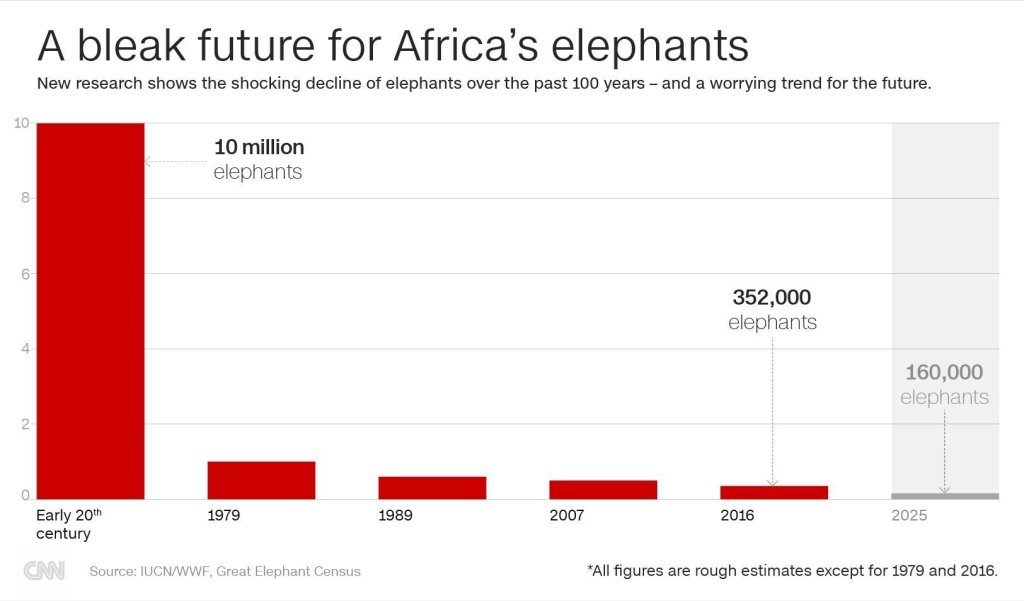
African elephants were listed as vulnerable by the International Union for Conservation of Nature International Union for Conservation of Nature (IUCN) in 2008, with no independent assessment of the conservation status of the two forms.[141] In 1979, Africa had an estimated minimum population of 1.3 million elephants, with a possible upper limit of 3.0 million. By 1989, the population was estimated to be 609,000; with 277,000 in Central Africa, 110,000 in eastern Africa, 204,000 in southern Africa, and 19,000 in western Africa. About 214,000 elephants were estimated to live in the rainforests, fewer than had previously been thought. From 1977 to 1989, elephant populations declined by 74% in East Africa. After 1987, losses in elephant numbers accelerated, and savannah populations from Cameroon to Somalia experienced a decline of 80%. African forest elephants had a total loss of 43%.
Wildlife censuses carried out in four Central African countries have revealed that forest elephant populations have declined by approximately 66% over eight years in an area covering almost 6 million hectares. These declines are attributed to the illegal killing of elephants for their ivory. However, there are indications that lower levels of poaching have occurred within protected areas, underscoring the role of protected areas as safe refuge for wildlife.
WWF, in collaboration with the respective country ministries in charge of wildlife and various partners, conducted the censuses between 2014 and 2016. The inventories were carried out in key protected areas (representing 20% of the survey area) and surrounding zones (logging concessions, hunting areas and other land use types) in Cameroon, the Republic of Congo, the Central African Republic and Gabon. The censuses focused on forest elephants, great apes (chimpanzees and gorillas) and additional data were collected on levels of human activities.
Published in a WWF Central Africa Biomonitoring report, the results indicate an estimated 9,500 forest elephants and 59,000 great apes (weaned, independent individuals) across the survey area. The studies revealed a 66% decline in elephant population between 2008 and 2016 across the landscapes but indicate stable populations of great apes. The figures for elephants are particularly alarming in the Cameroon segment of Tri-national Dja-Odzala-Minkebe (TRIDOM) transboundary conservation landscape where their numbers have declined by more than 70% in less than a decade.
“Despite these shocking data, we believe that the trends can be reversed if decision makers and wildlife managers make maximum use of these data to guide policies, surveillance plans and strategies to combat wildlife crime,” says Dr K. Paul N’GORAN, WWF Biomonitoring Coordinator for Central Africa. “There is a crucial need for the international community to support such actions taken by governments and conservation NGOs in collaboration with local communities,” he adds.
“This is the first time wildlife censuses have been carried out on such a large scale, over a short period of time in Central Africa,” states N’GORAN. “The censuses were conducted using standardised line transect technique and analysed using DISTANCE software, an approach widely applied and recognised for wildlife inventories,” N’GORAN adds.
Protected areas as wildlife refuge
The report showed that industrial-scale poaching for ivory is the biggest driver of the decline of elephant populations in the region. This has pushed elephants to seek refuge inside protected areas. “The inventory results revealed that poaching and other human pressures are higher outside national parks; this pressure is 50% less in national parks than outside,” N’GORAN says.
“While we commend the leaders of the four Congo Basin countries for the progress made in reducing the impact of human activities within protected areas, by working together with communities and organisations present on the ground, continued poaching and failure to secure the migration corridors of elephants in and around these protected areas could lead to the decimation of the remaining populations,” N’GORAN says. “This would extend the threat to other species of the rich biodiversity of these countries,” he adds.
WWF is urging leaders of these four countries to strengthen legislation aimed at curbing poaching. Authorities in these four countries are also encouraged to come together and step up joint cross border monitoring and law enforcement in and around protected areas. We stress the need to work in collaboration with local communities to tackle the complex operations of wildlife crime networks in the Congo Basin.
Contact William Casey mountainwolf22@gmail.com
